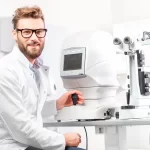
Design and Implementation of 3D Web Based Interactive Medical Devices
April 1, 2022
FDA classify Medical Devices and how to report device problems: A Systematic Review
April 22, 2022In brief
Natural-based drugs are important bioactive substances that have been used for the prevention and treatment of diseases. Natural products are prepared on a commercial scale from relevant medicinal plants. Hence, large plants are needed to extract and isolate naturally occurring compounds. Plant cell technology is the best strategy for plant-derived drugs, which have difficulty processing large-scale production. The purpose of this blog was to critically review the systematic review and meta-analysis published in the Journal of Pharmaceutical and Biomedical Research by Davoodi, Khoshvishkaie and Azadbakht (2019) from the Department of Pharmacognosy Faculty of Pharmacy, Mazandaran University of Medical Sciences, Sari, Iran. The paper attempted to determine the kinds, frequencies, and efficacies of plant cell technology-based manufacturing techniques for natural-based pharmaceuticals as an alternative to whole-herb preparation. This Systematic Review and Meta-analysis found that all production techniques had high efficacies and large-scale production percentages ranging from 90 to 100%, equivalent to traditional direct extractions.
Introduction
Natural-based drugs are important bioactive substances that have been used for the prevention and treatment of diseases. Moreover, several conditions are needed to develop novel drugs with higher efficacies and common side effects. Natural sources play important roles in the production of drugs. Surprisingly, some natural-based drugs are the only choices for preventing and treating relevant diseases. In addition, natural-based compounds especially plant isolated substances, are the main important patterns for effective drug design in drug discovery studies. Several phytochemical compounds, especially alkaloids, saponins, terpenoids and flavonoids, have been used for medicinal purposes. These compounds have been isolated from the important plant families. For instance, Atropa, Scopolia, Duboisia, Datura, Hyoscyamus and Mandragora plants from Solanaceae family have anticholinergic alkaloids, Catharanthus plant from Apocynaceae family and Taxus plant from Taxaceae family have the anticancer alkaloids, Artemisia plant from Asteraceae family contains antimalarial sesuiterpene lactones, and Papaver plants from Papaveraceae family contains antinociceptive and antitussive alkaloids.

Moreover, fungi and marine sources contain some similar compounds. The important plant-based drugs, occurring plants, structural formula, medicinal uses and mechanisms of action. These natural-based drugs should be produced commercially using relevant medicinal plants cultivated or in nature. Hence, large amounts of the plants are needed to extract and isolate the mentioned compounds that threaten the environment and living organisms in most cases. Extraction of paclitaxel from the bark of Taxus brevifolia is one of the examples which is damage to the plant. Then, alternative methods should produce natural-based drugs, especially plant-derived compounds.
Inclusion criteria
The Cochrane Library, MEDLINE/PubMED, Scopus and Embase were searched. The risk of bias was assessed using Cochrane tool. All of the themes stated below were reviewed in the selected publications from the above-mentioned databases:
- Secondary metabolite production with at least two-fold higher than primary conditions
- Secondary metabolite production with optimised conditions
- The collection of the best plant species for the production of pharmaceutical, natural compounds
- The selection of the best plant cell lines
Meta-analysis
All data for high scale Meta-analysis Expert’s production of secondary metabolites and five selected drugs were extracted and collected from peer-reviewed original articles that have been obtained from scientific journals. Moreover, data have been filtered and removed the duplicate cases and arranged using RevMan® software. The final data Writing A Meta-analysis were coded, including the percentages of methods and effective methods. In addition to a number of cases, all methods and outcomes have been calculated based on the obtained data, and all patients have been analysed.
Results
Methods for Production
In the study, four main methods for producing five high important plant-based drugs, including atropine, paclitaxel, vincristine, camptothecin and colchicine, have been selected and evaluated. The main techniques and plant sources for the production of mentioned drugs. According to the results, the frequency of cell suspension, callus, hairy root and immobilised plant cell methods for producing the drugs was 30.79%, respectively.
Discussion
Based on the Clinical Meta-Analysis Experts results, the efficacy values of more important methods for producing the plant-based drugs were approximately 90% to 100%. Many challenges have been made to optimise the production of plant-based drugs by alternative practices, but no extensive studies have been done to control the efficacy of these methods.
Conclusion
Plant cell technology is an important strategy for the production of plant-based drugs. It has several advantages such as high accuracy, repeatability, and productivity; this technology can be used instead of whole herbs. These methods should be optimised and commercialised for each natural compound
About Pubrica
Pubrica’s team of researchers and authors develop Scientific and medical research papers that can be indispensable tools to the practitioner/authors. Pubrica medical writers help you write and edit the introduction by introducing the reader to the shortcomings or empty spaces in the identified research field. Our experts know the structure that follows the broad topic, the problem, and background and advance to a narrow topic to state the hypothesis.
References
- Davoodi, Ali, Elnaz Khoshvishkaie, and Mohammad Azadbakht. “Plant cells technology as an effective biotechnological approach for high scale production of pharmaceutical natural compounds; A meta-analysis study.” Pharmaceutical and Biomedical Research 5.2 (2019): 1-9.
- Hosseini A, Mirzaee F, Davoodi A, Bakhshi Jouybari H, Azadbakh M. The traditional medicine aspects, biological activity and phytochemistry of Arnebia spp. Med Glas 2018;15:1-9.
